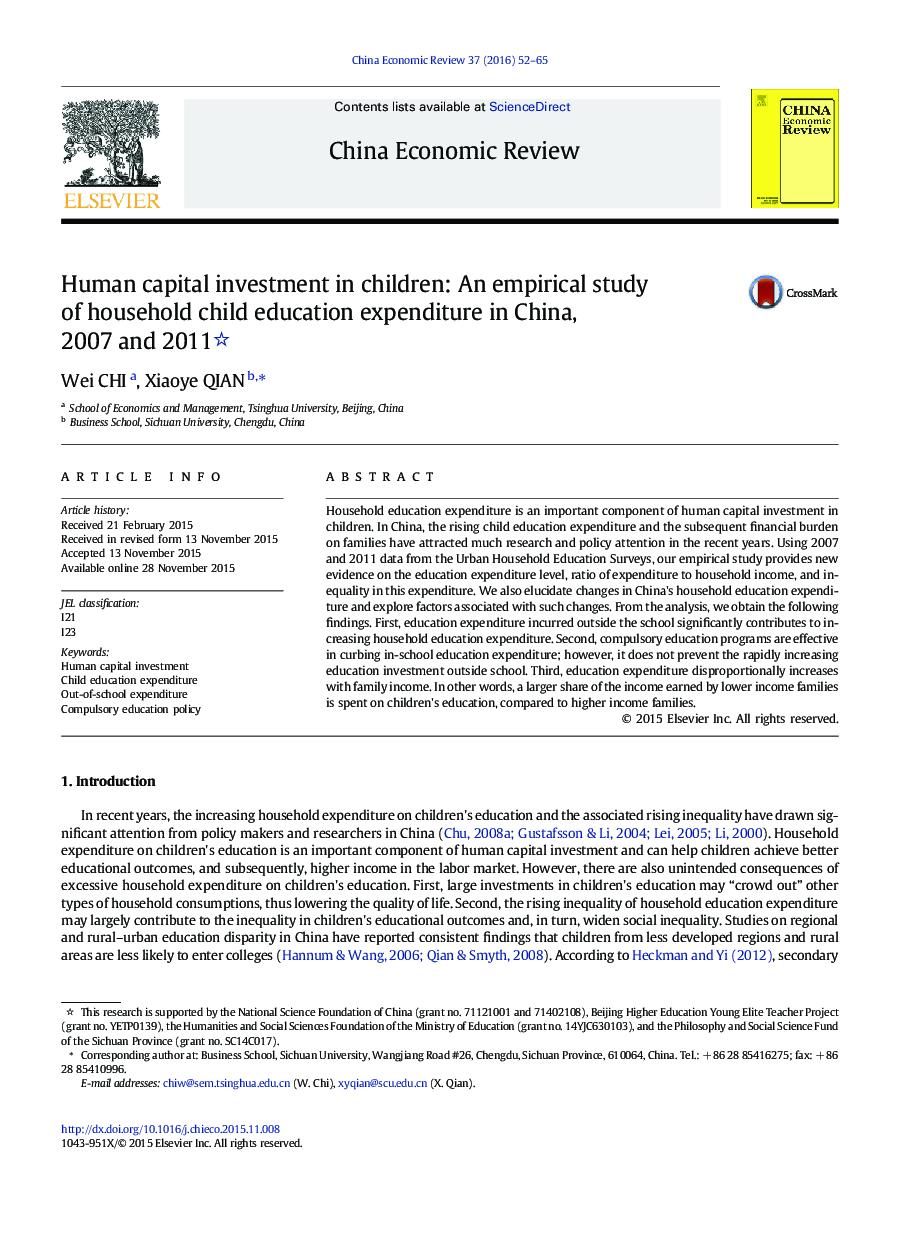| کد مقاله | کد نشریه | سال انتشار | مقاله انگلیسی | نسخه تمام متن |
|---|---|---|---|---|
| 5047402 | 1476264 | 2016 | 14 صفحه PDF | دانلود رایگان |

• Household child education expenditure increased rapidly in urban China from 2007 to 2011.
• Out-of-school expenditure is the main force driving the rapid growth of total education expenditure.
• Out-of-school expenditure is distributed more unequally than in-school expenditure.
• Low-income families spend a larger share of their income on children's education than high-income families.
• Parents with a higher education level spend a larger amount and a higher share of income on out-of-school education.
Household education expenditure is an important component of human capital investment in children. In China, the rising child education expenditure and the subsequent financial burden on families have attracted much research and policy attention in the recent years. Using 2007 and 2011 data from the Urban Household Education Surveys, our empirical study provides new evidence on the education expenditure level, ratio of expenditure to household income, and inequality in this expenditure. We also elucidate changes in China's household education expenditure and explore factors associated with such changes. From the analysis, we obtain the following findings. First, education expenditure incurred outside the school significantly contributes to increasing household education expenditure. Second, compulsory education programs are effective in curbing in-school education expenditure; however, it does not prevent the rapidly increasing education investment outside school. Third, education expenditure disproportionally increases with family income. In other words, a larger share of the income earned by lower income families is spent on children's education, compared to higher income families.
Journal: China Economic Review - Volume 37, February 2016, Pages 52–65